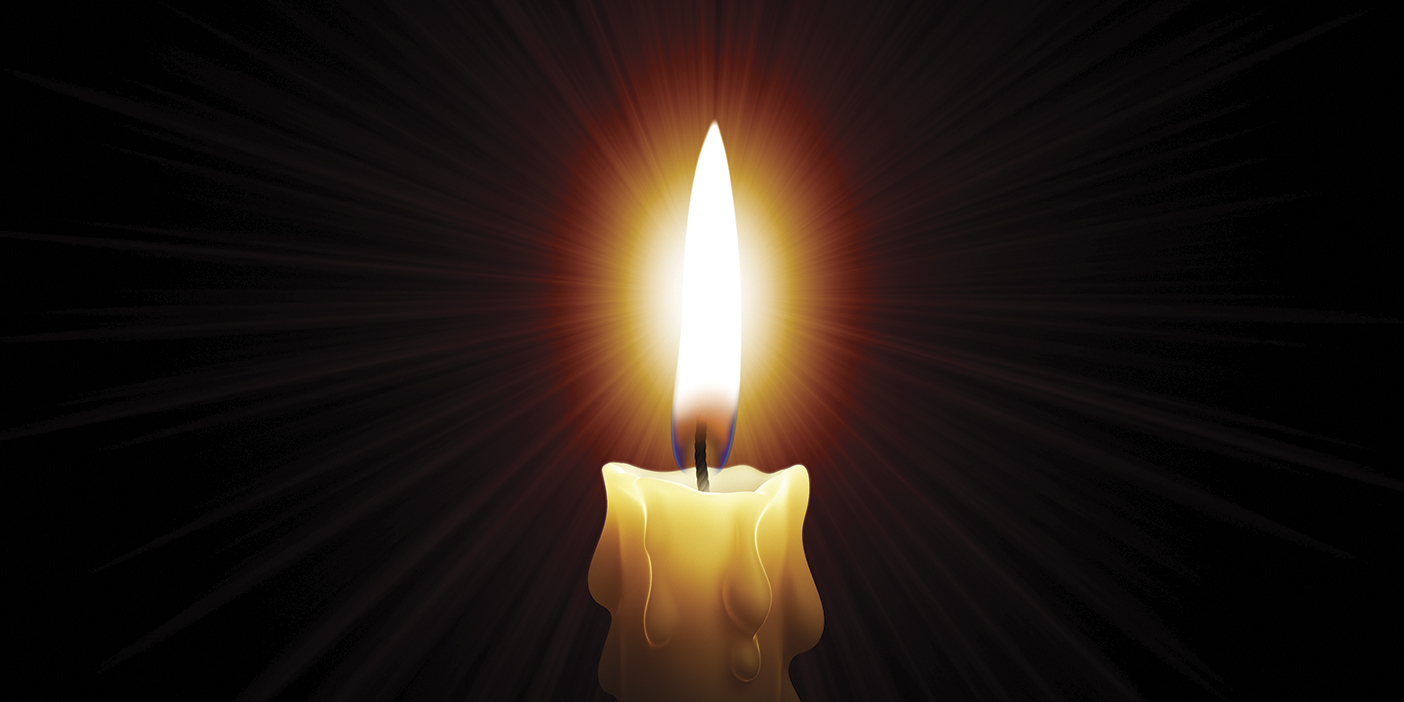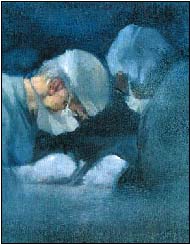By Richard H. Cracroft
In 1856 John Ruskin (1819–1900), the English essayist-critic-pundit nonpareil, wrote in Modern Painters:“The greatest thing a human soul ever does in this world is to seesomething, and tell what itsawin a plain way. . . . To see clearly is poetry, prophecy, and religion, all in one” (3, part 4, chapter 16, section 28). Mortal learning is really discovery through seeingand then clearly naming, telling,orexpressingwhat we’ve seen and experienced. Good books, then, are the great Show and Tell from which we come away having seen and understood and made part of us that which had hitherto been nebulous because unnamed and unspoken. The following books by BYU alumni open the eyes of our souls to a variety of experiences well seen and well told.
 A Convert’s Guide to Mormon Life: A Guidebook for New Members of The Church of Jesus Christ of Latter-day Saints(Salt Lake City: Bookcraft, 1998; 364 pp.; $14.95), by Clark L. and Kathryn H. Kidd, is a kind of Mormon Church for Dummies.This fresh, light, and delightful guide to Mormon life, ways, and means guides the just-baptized or newly activated Mormon to a nuts-and-bolts understanding of Mormon life and thought. En route, the Kidds unveil such mysteries as Ward Music Committee, Stake House,and Area Authority Seventiesand answer questions like What does it mean to “advance in the Priesthood”? or What is an “endowment”? or Does anyone ever vote not to sustain someone in a calling? (Note: The Kidds don’t touch such sensitive questions as Must the Jell-O salad alwaysbe green?) In 10 interesting chapters and a glossary of terms, the Kidds have fashioned an innovative resource book that makes one ask, “How come no one thought of this before?”
A Convert’s Guide to Mormon Life: A Guidebook for New Members of The Church of Jesus Christ of Latter-day Saints(Salt Lake City: Bookcraft, 1998; 364 pp.; $14.95), by Clark L. and Kathryn H. Kidd, is a kind of Mormon Church for Dummies.This fresh, light, and delightful guide to Mormon life, ways, and means guides the just-baptized or newly activated Mormon to a nuts-and-bolts understanding of Mormon life and thought. En route, the Kidds unveil such mysteries as Ward Music Committee, Stake House,and Area Authority Seventiesand answer questions like What does it mean to “advance in the Priesthood”? or What is an “endowment”? or Does anyone ever vote not to sustain someone in a calling? (Note: The Kidds don’t touch such sensitive questions as Must the Jell-O salad alwaysbe green?) In 10 interesting chapters and a glossary of terms, the Kidds have fashioned an innovative resource book that makes one ask, “How come no one thought of this before?”
Claude D. Newby’s It Took Heroes: A Chaplain’s Tribute to Vietnam Veterans and Those Who Waited for Them(Springville, Utah: Cedar Fort, 1998; 223 pp.; $13.95) is the exciting story of the first of Newby’s two tours of duty in Vietnam as an LDS chaplain. He brings that ill-fated war up close and personal through his accounts of the heroism, tragedy, and faith-under-fire of the young men who served–regardless of their faith. At one point a Catholic grunt (infantry man), cursing his unit’s miserable plight, realizes the chaplain has overheard his blasphemy and pleads, “Forgive me, Father,” to which Capt. Newby replies, without missing a beat, “My son, do three rosaries, two Hails Mary and stop using God’s name in vain.” He adds, “I never heard [Pvt.] Lysak curse again” (p. 77).
Fiction has its special way of opening our eyes. Of special interest for lovers of Mormon stories, then, is the formation of the Mormon Literary Library, which is undertaking to reprint Mormon literary classics. The first three reprints in this welcome series are Douglas H. Thayer’s Under the Cottonwoods and Other Mormon Stories(Salt Lake City: Tabernacle Books, 1999; 229 pp.; $13.95); Eugene England’s essay collection, Why the Church Is as True as the Gospel(Salt Lake City: Tabernacle Books, 1999; 149 pp.; $13.95); and Donald R. Marshall’s short story collection, The Rummage Sale(Salt Lake City: Tabernacle Books, 1999; 163 pp.; $13.95). Another noteworthy arrival is Marilyn Arnold’s Song of Hope,(American Fork, Utah: Covenant Communications, 1999; 199 pp.; $15.95), the continuing story (begun in Desert Song) of English professor Delia McGrath’s rediscovery of her Mormon faith, a return stimulated by the death of her father but complicated by her growing friendship with gentle gentile Gordon Foster. This volume, the second of a projected trilogy, features Delia’s outspoken and no-nonsense mother, Polly, as she undertakes what turns out to be an adventurous drive from southern to northern Utah. Meanwhile Delia, recovering from her own brush with death (in Desert Song), returns on crutches to Wisconsin and the university only to undergo adventures of her own as she continues to feel her way back to faith and into love.
Two recent novels help us to see comically through the darkened glass of mortality: Kenny Kemp has written a Heaven Can Waitkind of comic novel in I Hated Heaven: A Novel of Love After Death(Salt Lake City: Alta Films Press, 1998; 278 pp.; $12). Kemp spins a delightful, supposedly non-LDS tale about a little family separated by the death of Tom Waring, a believing father who breaks every rule of an obviously LDS heaven in order to return to life with April, his unbelieving wife, and Josh, his believing child. It’s a fun read firmly grounded in a Mormon universe, as are the latest antics of Robert Farrell Smith, the author of the hilarious comic novels Baptists at Our Barbecueand The Miracle of Forgetness.In All Is Swell: Trust in Thelma’s Way(Salt Lake City: Deseret Book, 1999; 293 pp.; $15.95), Smith begins a trilogy of comic tales about Elder Trust Williams. As a new and idealistic missionary, Elder Williams lands (for the duration of his mission) in Thelma’s Way, Tenn., a back-water hamlet in the hills that was founded by a band of Mormons who got badly lost on their way out of Nauvoo heading west. Trust’s challenge as the president of this nightmare of a branch is to reactivate as hilarious a bunch of unorthodox, back-slid, and chronically adult Aaronic misfits as Smith’s wonderfully wacky imagination can concoct. The novel ends with Trust’s (very honorable) release, with wondrous resolutions, and with confirmation of trust in God, in Trust, and in Robert Smith’s delicious promise of two more funny volumes that will prove again that Mormon humor needn’t be barbed or caustic to tickle celestial funny bones.
 Historians who interpret for us what they see in our collective past open new windows to our souls. Lawrence R. Flake performs this service for us in his fascinating biography George Q. Cannon: His Missionary Years(Salt Lake City: Bookcraft, 1998; 208 pp.; $16.95). Flake follows Cannon through five consecutive full-time missions, from age 22 to 37, which took him twice to California and once each to Hawaii, the eastern United States, and Europe. Along the way Cannon became a politically astute defender of the faith, businessman, writer for the Deseret News,and editor of the Juvenile Instructor,who would serve as an apostle and as a counselor to four presidents of the Church. Too little known until now, Cannon’s story is inspiring and fascinating. So is Wayward Saints: The Godbeites and Brigham Young,by Ronald W. Walker (Urbana and Chicago: University of Illinois Press, 1998; 432 pp.; $25). Walker tells for the first time the little-understood story of the “New Movement,” a dissenting group of British Mormon intellectuals who challenged Brigham Young’s leadership and authority in the 1870s. Walker, a BYU professor of history and senior research historian of the Joseph Fielding Smith Institute for Church History, anchors his story in the biographies of the leading figures of the schism–William S. Godbe, E.L.T. Harrison, Edward W. Tullidge, Fanny and T.W.H. Stenhouse, former apostle Amasa Mason Lyman, Henry W. Lawrence, and Eli B. Kelsey. Walker describes the turbulent milieu of a Mormon Zion under a complex of pressures: Godbe and other ambitious Mormon businessmen, a sudden increase in gentile merchants, increasing gentile interest in mining, the ever-closer-pressing railroad, and encroaching anti-Mormon legislation in Congress.
Historians who interpret for us what they see in our collective past open new windows to our souls. Lawrence R. Flake performs this service for us in his fascinating biography George Q. Cannon: His Missionary Years(Salt Lake City: Bookcraft, 1998; 208 pp.; $16.95). Flake follows Cannon through five consecutive full-time missions, from age 22 to 37, which took him twice to California and once each to Hawaii, the eastern United States, and Europe. Along the way Cannon became a politically astute defender of the faith, businessman, writer for the Deseret News,and editor of the Juvenile Instructor,who would serve as an apostle and as a counselor to four presidents of the Church. Too little known until now, Cannon’s story is inspiring and fascinating. So is Wayward Saints: The Godbeites and Brigham Young,by Ronald W. Walker (Urbana and Chicago: University of Illinois Press, 1998; 432 pp.; $25). Walker tells for the first time the little-understood story of the “New Movement,” a dissenting group of British Mormon intellectuals who challenged Brigham Young’s leadership and authority in the 1870s. Walker, a BYU professor of history and senior research historian of the Joseph Fielding Smith Institute for Church History, anchors his story in the biographies of the leading figures of the schism–William S. Godbe, E.L.T. Harrison, Edward W. Tullidge, Fanny and T.W.H. Stenhouse, former apostle Amasa Mason Lyman, Henry W. Lawrence, and Eli B. Kelsey. Walker describes the turbulent milieu of a Mormon Zion under a complex of pressures: Godbe and other ambitious Mormon businessmen, a sudden increase in gentile merchants, increasing gentile interest in mining, the ever-closer-pressing railroad, and encroaching anti-Mormon legislation in Congress.
President Young’s vigorous responses to these threats to Mormon hegemony led to the establishment of the ZCMI system, the United Orders, and boycotts of gentile and maverick Mormon merchants, as he sought to defend and preserve the old pioneer ideal of the “Great Basin Kingdom.” In a short time, and without need for serious repression by the Saints, the rebellion flickered, dimmed, and blew out. Walker, a master of historical narrative, has enlightened a little-understood corner of Mormon/Utah history, and he has done it brilliantly.
With her fine biography of David Smith, From Mission to Madness: Last Son of the Mormon Prophet(Urbana and Chicago: University of Illinois Press, 1998; 368 pp.; $19.95), Valeen Tippetts Avery won the 1998 Evans Biography Prize for the year’s best biography out of Mormon Country. She tells the virtually unknown story of David Hyrum Smith (1844–1904), the youngest son of the Prophet Joseph Smith Jr. and Emma Hale Smith. David, who was born Nov. 17, 1844, and grew up in Nauvoo, joined the Reorganized Church of Jesus Christ of Latter Day Saints (RLDS) and became, at 19, an RLDS missionary. On several missions to the Utah Mormons, he preached against polygamy, even as he became increasingly persuaded, by 1872, that his father had introduced, taught, and lived it.
During his 1872–1873 mission to Utah, amidst rumors that he had joined the Utah Mormons, David fell mentally ill and returned home to Plano, Ill. He was committed, not long after his 32nd birthday, to the Northern Illinois Hospital and Asylum for the Insane, at Elgin. David’s sad story is well told by Avery, who affords interesting glimpses into the lives of the Prophet Joseph Smith’s family in the post-Nauvoo years and their roles in the rise of the RLDS church.
That’s it for this time. Are you seeingmore clearly because others have seenand told?
Richard H. Cracroft, professor of English and director of the Center for the Study of Christian Values in Literature, has taught American, Western, and LDS literature at BYU since 1963.









